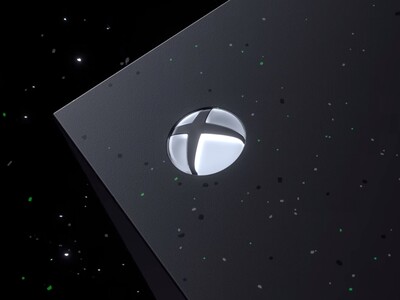- AMD Ryzen 9 / 7 / 5 / 3 5***(X) "Zen 3" (AM4)
- Kormányok / autós szimulátorok topicja
- 5.1, 7.1 és gamer fejhallgatók
- Computex 2024: Mini-ITX alaplapokat vár a Fractal két új háza
- HiMedia lejátszók
- Az Xbox Series X|S konzolnak három új verziója jön idén
- Milyen széket vegyek?
- Gaming notebook topik
- Azonnali notebookos kérdések órája
- Autós kamerák
Hirdetés
-


Call of Duty: Black Ops 6 - Nyugalom, nem lesz 300GB-os a játék
gp Az Activision némileg tisztázta a felbukkant félreértést az idei epizód méretével kapcsolatban.
-


Az Xbox Series X|S konzolnak három új verziója jön idén
ph A trió egyik tagja egy Blu-ray olvasótól mentes, olcsósított kivitel lesz.
-


Két marokkal szórja a Realme a GT 6 infómorzsáit
ma Valóban egy másik Realme átirata érkezhet június 20-án geek power tuninggal.
-

PROHARDVER!
A legtöbb kérdésre (igen, talán arra is amit éppen feltenni készülsz) már jó eséllyel megtalálható a válasz valahol a topikban. Mielőtt írnál, lapozz vagy tekerj kicsit visszább, és/vagy használd bátran a keresőt a kérdésed kulcsszavaival!
Új hozzászólás Aktív témák
-

stratova
veterán
válasz
 Malibutomi
#26121
üzenetére
Malibutomi
#26121
üzenetére
AMD-NV Kartell

Abu85 Bár messze nem csak ezen múlik, a memória helyzet erősen hajaz a Titan X / G980 Ti-re amiken 12/6 GB GDDR5-t volt és kijött Ti árszinten Fury X 4 GB VRAM-mal.
Most Raja egy 8 GB-os lapkát mutatott, Titan X-en 12 csücsül.Bár ez alapján nem lepődnék meg a pozicionálás megismétléséről:
Interestingly, to drive this point home, AMD actually turned to games rather than professional applications. Plotting out the memory allocation and usage patterns of The Witcher III and Fallout 4, AMD finds that both games allocate far more memory than they actually use, by nearly a factor of 2x. Part of this is undoubtedly due to the memory management model of the DirectX 11 API used by both games, but a large factor is also simply due to the fact that this is traditionally what games have always done. Memory stalls are expensive and games tend to be monolithic use cases, so why not allocate everything you can, just to be sure you don’t run out?
The end result here is that AMD is painting a very different picture for how they want to handle memory allocations and caching on Vega and beyond. In the short term it’s professional workloads that stand to gain the most, but in the long run this is something that could impact games as well. And not to be ignored is virtualization; AMD’s foray into GPU virtualization is still into its early days, but this likely will have a big impact on virtualization as well. In fact I imagine it’s a big reason why AMD is giving Vega the ability to support a relatively absurd 512TB of virtual address space, many times the size of local VRAM. Multi-user time-sharing workloads are a prime example of where large address spaces can be useful.
[ Szerkesztve ]
Új hozzászólás Aktív témák
A topikban az OFF és minden egyéb, nem a témához kapcsolódó hozzászólás gyártása TILOS!
MIELŐTT LINKELNÉL VAGY KÉRDEZNÉL, MINDIG OLVASS KICSIT VISSZA!!
A topik témája:
Az AMD éppen érkező, vagy jövőbeni új grafikus processzorainak kivesézése, lehetőleg minél inkább szakmai keretek között maradva. Architektúra, esélylatolgatás, érdekességek, spekulációk, stb.
- AMD Ryzen 9 / 7 / 5 / 3 5***(X) "Zen 3" (AM4)
- Politika
- Filmvilág
- Musk betiltja az iPhone-okat a Teslánál és az X-nél, ha ezt meglépi az Apple
- UbiForward24 - Prince of Persia: The Sands of Time Remake csak 2026-ban
- Kerti grill és bográcsozó házilag (BBQ, tervek, ötletek, receptek)
- Milyen légkondit a lakásba?
- Android játékok topikja
- sziku69: Szólánc.
- gban: Ingyen kellene, de tegnapra
- További aktív témák...
- 2025.11.04. Garancia! MSI RTX 3080 12GB GDDR6X TRIO PLUS Videokártya! BeszámítOK
- EVGA RTX 3070 8GB GDDR6 FTW3 ULTRA GAMING Eladó! 125.000.-
- ASRock Challenger D RX 6600 8GB - garancia 2024 november - eladó!
- KFA2 GeForce RTX 3070 EX LHR OC 8GB GDDR6 256bit
- AIO Vízhűtéses NVIDIA RTX 2080 SUPER ?? Igen!! Igazi kuriózum eladó csak itt!! - Beszámítás: OK
Állásajánlatok
Cég: Ozeki Kft.
Város: Debrecen











